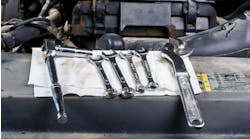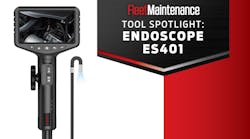Have you found that your pneumatic tool is underpowered or not running as expected? Well, it could all come down to your airline accessories and/or connection, rather than the tool itself. It’s worth quickly checking your airline installation – a simple job that only takes a couple of minutes.
It’s easy: each accessory from the filter, regulator, and lubricator (FRL) to the tool’s inlet should be selected considering the following four key tool values:
1. Inlet size
= size of the tool’s air inlet. This value will help you select the correct size of connector.
2. Inlet type
= type of thread on the tool air inlet. The three main types of pneumatic tool inlet threads are:
- NPT (National Pipe Thread), mostly used in America,
- PT (Pipe Thread), mostly used in Asia,
- BSP (British Standard Pipe), mostly used in Europe.
Safety tip: To avoid any wrong connections or air leakage, never mix thread types.
3. Air compression as dynamic pressure
= the volume of compressed air required by the tool to work properly and efficiently. This value is given in cubic feet per meter (cfm) or in liters per second/minute (l/s or l/m).
4. Recommended hose diameter
= while this isn’t typically classified as a tool value, tool manufacturers usually recommend the correct hose diameter to help ensure your tools perform at their best. The value is specified in millimeters (mm) and/or in inch (“).
Where to find the information?
Refer to the manufacturer’s recommendations online, to the tool print catalog, or the operating manual.
By double-checking these four values, you will not only increase your tool’s efficiency but also reduce safety hazards in the workplace linked to airline installation failure.
Information provided by Chicago Pneumatic



